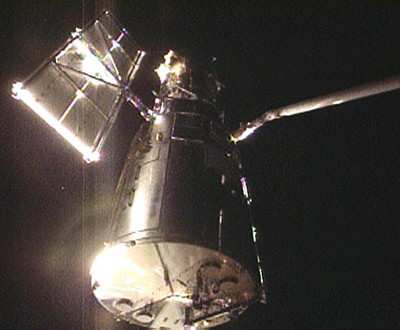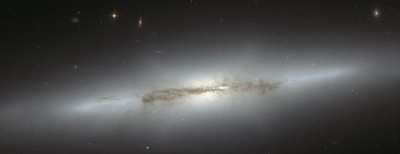NASA Celebrates 20 Years Of Hubble Discovery
As the Hubble Space Telescope achieves the major milestone of
two decades on orbit, NASA and the Space Telescope Science
Institute, or STScI, in Baltimore are celebrating Hubble's journey
of exploration with a stunning new picture and several online
educational activities. There are also opportunities for people to
explore galaxies as armchair scientists and send personal greetings
to Hubble for posterity.

Carina Nebula Photo Courtesy NASA
NASA is releasing a new Hubble photo of a small portion of one
of the largest known star-birth regions in the galaxy, the Carina
Nebula. Three light-year-tall towers of cool hydrogen laced with
dust rise from the wall of the nebula. The scene is reminiscent of
Hubble's classic "Pillars of Creation" photo from 1995, but even
more striking.
NASA's best-recognized, longest-lived and most prolific space
observatory was launched April 24, 1990, aboard the space shuttle
Discovery during the STS-31 mission. Hubble discoveries
revolutionized nearly all areas of current astronomical research
from planetary science to cosmology. "I never believed in 1990 that
the Hubble would end up this great," said Ed Weiler, NASA associate
administrator for the Science Mission Directorate and chief
scientist for the Hubble program when it launched. "It's changed a
lot of thinking and it's changed a lot of what I learned 30 years
ago in grad school."
Over the years, Hubble has suffered broken equipment, a
bleary-eyed primary mirror, and the cancellation of a planned
shuttle servicing mission. But the ingenuity and dedication of
Hubble scientists, engineers and NASA astronauts allowed the
observatory to rebound and thrive. The telescope's crisp vision
continues to challenge scientists and the public with new
discoveries and evocative images.

Hubble Repair Mission Photo Courtesy NASA
"Hubble is undoubtedly one of the most recognized and successful
scientific projects in history," said Weiler. "Last year's space
shuttle servicing mission left the observatory operating at peak
capacity, giving it a new beginning for scientific achievements
that impact our society."
Hubble fans worldwide are being invited to take an interactive
journey with Hubble. The public also will have an opportunity
to become at-home scientists by helping astronomers sort out the
thousands of galaxies seen in a Hubble deep field observation.
STScI is partnering with the Galaxy Zoo consortium
of scientists to launch an Internet-based astronomy project where
amateur astronomers can peruse and sort galaxies from Hubble's
deepest view of the universe into their classic shapes: spiral,
elliptical, and irregular. Dividing the galaxies into categories
will allow astronomers to study how they relate to each other and
provide clues that might help scientists understand how they
formed.

Hubble Image Galaxy NGC4710 Photo Courtesy
NASA
Although there won't be any more servicing missions by the
shuttle, the telescope is ready to make more discoveries. "The
telescope still looks in great shape," said Jon Grunsfeld, an
astronaut and astronomer who worked on Hubble during two shuttle
missions. "It's just a thrill to work on what is by many measures
the most productive scientific instrument ever created by
humans."
 Unfortunate... ANN/SportPlane Resource Guide Adds To Cautionary Advisories
Unfortunate... ANN/SportPlane Resource Guide Adds To Cautionary Advisories ANN FAQ: Turn On Post Notifications
ANN FAQ: Turn On Post Notifications ANN's Daily Aero-Term (04.29.24): Visual Approach Slope Indicator (VASI)
ANN's Daily Aero-Term (04.29.24): Visual Approach Slope Indicator (VASI) ANN's Daily Aero-Term (04.28.24): Airport Marking Aids
ANN's Daily Aero-Term (04.28.24): Airport Marking Aids ANN's Daily Aero-Linx (04.28.24)
ANN's Daily Aero-Linx (04.28.24)





